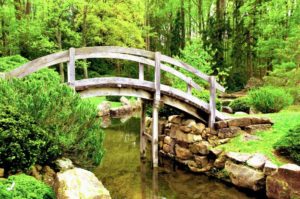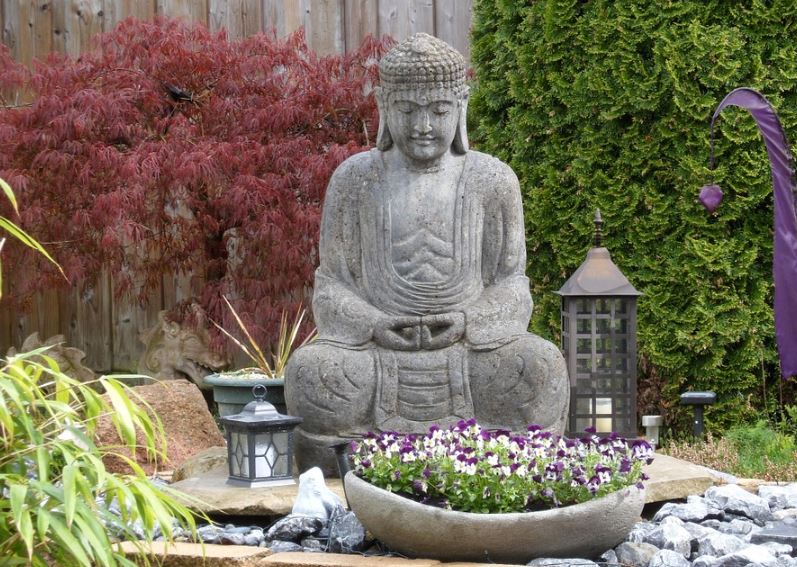Zen philosophies come from Mahayana Buddhism. The word “Zen” means meditation. The goal in Zen is to reach enlightenment through focused thinking. Zen gardens provide a place well suited for meditation. A zen garden is the Japanese celebration of nature’s beauty blending into a design where various colored rocks, big and small, create a strong background that’s both simple and visually appealing.
History Brief:
According to the Bowdoin College, Zen gardens with rocks, as we see today, began appearing in Japan approximately around the 11th century at Buddhist temples, having come from China with Buddhist monks. These gardens provided the monks with a serene place to walk and contemplate Buddha’s teachings. The garden design creates a serene spot in the landscape to promote a feeling of peace. According to the Helpful Gardener, a special set of monks called “Ishi-tate so,” meaning “stone-setting priest,” traveled around Japan and set up these gardens, gathering their inspiration from Sung paintings that featured gray, white and black ink. By the 13th century, these gardens were so integrated into Japanese life that poets like Muso Soseki began extolling their benefits to the human spirit.
Significance:
In a Zen garden, the small pieces of gravel or sand represent water. As a monk rakes this surface, he creates the texture of waves in an ocean. All around this surface, larger rocks stand protruding from the ocean as you might see when you sand at rocky shores.
 Typically Zen design has one keystone representing the center of the world (called Shumi-sen) around which the builder places other smaller pieces, including at least one flat rock, known as a Worshiping Stone. The main stone represents Buddha, while smaller ones symbolize children, animals or tricksters, according to Japanese Gardens for North Americans.
Typically Zen design has one keystone representing the center of the world (called Shumi-sen) around which the builder places other smaller pieces, including at least one flat rock, known as a Worshiping Stone. The main stone represents Buddha, while smaller ones symbolize children, animals or tricksters, according to Japanese Gardens for North Americans.
Some Zen gardens utilize sand and natural elements. This design illustrates that contradiction is part of all life, a philosophy central to Zen, Tao, and Shinto beliefs. Shrines may dot a Zen garden as places where Spirit and humankind come together. Gates around the garden designate walking paths. Bear in mind, however, that no two Zen gardens are alike. The garden is a very individual reflection meant as an insight into how the gardener interprets their world and Path.
Rock Features
The pattern of the sand or gravel in a Zen garden inspires serenity. As a person rakes, it gives the mind time to release, organize and integrate specific thoughts, or none at all. Everything placed in a Zen garden design promotes relaxation, focus, and peace. The rocks, as the eternal element of nature in a Zen garden, break out into five different categories. Kikyaku (the element of earth) is a reclining stone that sets near the foreground. Shintai (the element of water) is either horizontal or flat and is often used as a base stone. Shigyo (the element of fire) arches and sets to the side of other shaped stones. Reisho (the element of metal) is vertical and low lying, demonstrating the firm nature of metal. Finally, the Taido (the element of wood) is a vertical, tall stone implying trees and usually goes to the back of the design so it doesn’t impede the view. Stones may also characterize mountains or islands, and white rocks or sand cones reflect the purity.





